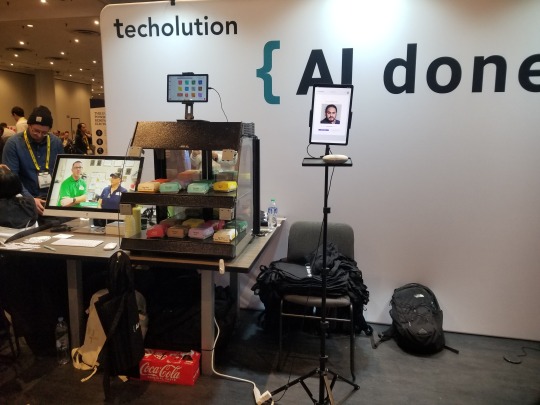#Graphene Market Size
Explore tagged Tumblr posts
Text
The Graphene Industry: An In-Depth Market Analysis
Introduction to Graphene
Graphene, a single layer of carbon atoms arranged in a two-dimensional honeycomb lattice, has gained significant attention since its discovery in 2004. Renowned for its exceptional electrical, thermal, and mechanical properties, graphene is poised to revolutionize various industries, including electronics, energy, aerospace, and materials science.
Market Overview
The graphene market has witnessed substantial growth over the past few years, driven by increasing investments in research and development, rising demand for advanced materials, and the growing commercialization of graphene-based products. According to recent market research, The graphene market is projected to reach approximately USD 0.93 billion in 2024 and is expected to grow to about USD 4.77 billion by 2029, achieving a CAGR of 38.64% during the forecast period from 2024 to 2029.
Key Drivers of Market Growth
Technological Advancements: Continuous innovation in graphene production methods, such as chemical vapor deposition (CVD) and liquid-phase exfoliation, is lowering production costs and enhancing quality.
Increasing Demand in Electronics: The demand for lightweight, flexible, and high-performance materials in the electronics industry is fueling the adoption of graphene in applications such as touchscreens, batteries, and sensors.
Energy Storage Solutions: Graphene's high conductivity and large surface area make it ideal for applications in supercapacitors and batteries, particularly lithium-ion batteries, where it can enhance performance and lifespan.
Healthcare Applications: Graphene’s biocompatibility and antimicrobial properties are driving research into its use in drug delivery systems, biosensors, and other medical applications.
Government Initiatives: Various governments are investing in graphene research and development to bolster their position in the global market, leading to increased funding and collaboration opportunities.
Challenges Facing the Industry
Despite its potential, the graphene market faces several challenges:
Production Scalability: While lab-scale production of graphene has been successful, scaling up to meet industrial demands remains a challenge.
High Production Costs: Current methods of graphene production can be expensive, which limits widespread adoption in cost-sensitive applications.
Lack of Standardization: The absence of standardized testing and quality control methods can hinder market growth, as companies may struggle to ensure product consistency.
Regulatory Hurdles: The introduction of new materials in various sectors often faces stringent regulatory scrutiny, which can delay commercialization.
Regional Insights
North America: The region is a major player in the graphene market, driven by robust research initiatives and a strong presence of key players.
Europe: Significant funding from the European Union for graphene research has accelerated market growth, with many startups emerging in the region.
Asia-Pacific: Rapid industrialization and increasing investment in nanotechnology are propelling the growth of the graphene market in countries like China and Japan.
Future Outlook
The future of the graphene market looks promising, with anticipated advancements in production techniques and increased adoption across various industries. As more companies explore the potential applications of graphene, the market is likely to expand, leading to new opportunities for innovation and collaboration.
Conclusion
The graphene industry stands at the forefront of technological innovation, promising a multitude of applications across diverse sectors. While challenges remain, the continued investment in research and development, coupled with the growing interest from various industries, suggests that graphene could become a cornerstone material in the near future. Stakeholders should remain vigilant to the evolving landscape and prepare to leverage the opportunities that arise in this dynamic market. For a detailed overview and more insights, you can refer to the full market research report by Mordor Intelligence: https://www.mordorintelligence.com/industry-reports/graphene-market
#Graphene Industry#Graphene Market#Graphene Market Size#Graphene Market Share#Graphene Market Analysis#Graphene Market Report
0 notes
Text
#Graphene Market Size#Graphene Market Share#Graphene Market Trends#Graphene Market Growth#Graphene Market Analysis#Graphene Market Forecast#Graphene Market Report#Graphene Industry Report
0 notes
Text
Top 15 Market Players in Global Graphene Oxide Nanoplatelets Market

Top 15 Market Players in Global Graphene Oxide Nanoplatelets Market
The global graphene oxide nanoplatelets (GONPs) market has seen remarkable growth in recent years, driven by advancements in nanotechnology, expanding applications in diverse industries, and increasing investment in R&D. Here are 15 key market players contributing to the growth and innovation in this space:
XG Sciences Known for its advanced materials solutions, XG Sciences is a leader in graphene nanoplatelets production, offering customized solutions for various industries.
Angstron Materials Inc. A pioneering company in graphene oxide and graphene nanoplatelet production, Angstron Materials focuses on R&D for applications in energy storage, coatings, and composites.
Graphenea Based in Europe, Graphenea is a major supplier of high-quality graphene oxide and graphene nanoplatelets for academic and industrial use.
CVD Equipment Corporation This company specializes in chemical vapor deposition systems and offers graphene materials tailored for electronics and energy storage.
Haydale Graphene Industries Haydale integrates graphene and other nanomaterials into innovative composite solutions, enhancing product performance across industries.
Global Graphene Group (G3) G3 focuses on scalable production of graphene oxide nanoplatelets and offers advanced materials for lithium-ion batteries and thermal management applications.
ACS Material, LLC A global supplier of high-purity graphene oxide nanoplatelets, ACS Material serves clients in academic research and commercial applications.
Graphite Central Specializing in graphene oxide and nanoplatelets, Graphite Central caters to diverse industries, including energy, construction, and healthcare.
Thomas Swan & Co. Ltd. A UK-based company, Thomas Swan produces graphene nanoplatelets and works on integrating nanotechnology into coatings, plastics, and composites.
Vorbeck Materials Vorbeck focuses on commercial applications of graphene oxide nanoplatelets, particularly in conductive inks, coatings, and composites.
Applied Graphene Materials (AGM) AGM offers graphene oxide nanoplatelets tailored for industrial use, including coatings, lubricants, and energy storage systems.
Nanoinnova Technologies This Spain-based company provides advanced graphene oxide nanoplatelets for academic and industrial applications, particularly in electronics and energy.
Directa Plus Directa Plus specializes in the production of graphene-based materials and nanoplatelets for environmental and industrial applications.
CealTech Known for its innovative approach to graphene production, CealTech offers high-quality nanoplatelets for medical and industrial applications.
Elcora Advanced Materials Elcora mines and processes graphite, offering graphene oxide nanoplatelets for high-performance applications.
Request report sample at https://datavagyanik.com/reports/global-graphene-oxide-nanoplatelets-market-size-production-sales-average-product-price-market-share/
Top Winning Strategies in Graphene Oxide Nanoplatelets Market
To thrive in the competitive graphene oxide nanoplatelets market, companies are adopting innovative strategies. Here are the key approaches being used:
Investment in R&D Companies are heavily investing in research to develop high-quality, scalable, and cost-effective graphene oxide nanoplatelets.
Partnerships and Collaborations Strategic collaborations between manufacturers and end-use industries, such as automotive and electronics, are driving product adoption.
Customization of Products Tailoring graphene oxide nanoplatelets to meet specific industrial needs has become a key differentiator.
Focus on Sustainability Companies are exploring eco-friendly production processes to minimize environmental impact and meet regulatory standards.
Expansion into Emerging Markets Targeting growing economies in Asia-Pacific and the Middle East provides opportunities for new market penetration.
Technology Licensing Licensing proprietary production technologies is helping companies expand their global footprint while ensuring quality control.
Vertical Integration Integrating upstream and downstream processes ensures better control over quality, cost, and supply chain management.
Government Support and Grants Leveraging government initiatives and funding for nanotechnology innovation helps companies accelerate growth.
Product Diversification Expanding applications of graphene oxide nanoplatelets into sectors like healthcare, aerospace, and energy storage broadens revenue streams.
Digital Marketing and Online Platforms Using digital channels to market graphene products and engage directly with researchers and manufacturers enhances visibility.
Cost Optimization Companies are focusing on reducing production costs while maintaining high-quality standards to stay competitive.
Patents and Intellectual Property (IP) Protection Securing patents for proprietary technologies ensures competitive advantage and market exclusivity.
Customer Education Educating customers about the benefits of graphene oxide nanoplatelets through seminars, webinars, and workshops drives adoption.
Focus on High-Growth Applications Targeting booming sectors like electric vehicles, 5G technology, and renewable energy accelerates demand.
Global Supply Chain Optimization Enhancing distribution networks and ensuring timely delivery to global markets ensures customer satisfaction and market growth.
By adopting these strategies, companies can strengthen their market position and capitalize on the expanding opportunities in the graphene oxide nanoplatelets market.
Request a free sample copy at https://datavagyanik.com/reports/global-graphene-oxide-nanoplatelets-market-size-production-sales-average-product-price-market-share/
#Graphene Oxide Nanoplatelets Market#Graphene Oxide Nanoplatelets Production#market players#market size#market share#top trends#revenue#average price
0 notes
Text
U.S. Graphene Market Size
The U.S. graphene market size was valued at USD 43 Million in 2024. Looking forward, IMARC Group estimates the market to reach USD 452.4 Million by 2033, exhibiting a CAGR of 28.7% from 2025-2033. The market is primarily driven by the rapid integration of graphene in construction materials, the growing use of graphene in wearable technology, and the ongoing development of graphene-based water purification solutions, addressing water scarcity and environmental sustainability challenges.
#U.S. Graphene Market Size#U.S. Graphene Market#U.S. Graphene Market share#U.S. Graphene Market forecast#U.S. Graphene Market 2025
0 notes
Text
Graphene Coating Market Will Advance at a 29.0% CAGR
The graphene coating market was USD 166.6 million in 2023, and it will increase to USD 979.1 million, with a 29.0% compound annual growth rate, by 2030.
This growth can be ascribed to the rising need for high-performance coatings as well as innovative manufacturing methods. Furthermore, these materials are strong and possess the possibility to decrease maintenance requirements, which complies with the increasing focus on sustainability.
The corrosion resistance category, on the basis of application, is likely to advance at the highest compound annual growth rate, of 30%, in the years to come. Surfaces coated with graphene-containing materials are stronger and last longer, as this allotrope of carbon defends against corrosion.
Automotive, oil & gas, marine, manufacturing, and infrastructure sectors strongly depend on corrosion-resistant coatings to protect their assets. The requirement for more efficient anti-corrosion products has improved owing to the rising emphasis on enhancing the beneficial lives of equipment and structures.

The medical devices category, on the basis of end user, will advance at the fastest compound annual growth rate, of 28%, in the years to come. The biocompatibility of graphene’s makes them suitable for biomedical applications, such as tissue designing, drug delivery systems, clinical inserts, and biosensors.
On the other hand, the automotive category was the largest contributor to the graphene coating market in 2023, with a 45% share. This can be mainly attributed to the fact that graphene coatings are extensively employed in various automotive components since they help in improving strength as well as overall effectiveness.
Moreover, their robust protection from corrosion makes them ideal for protecting auto components from damage or rust caused by exposure to severe environments or road conditions.
APAC is likely to advance at the fastest compound annual growth rate, of 32%, in the years to come. This can be because of the constantly surging populace in this region. The economic development in this region increases the attention to these materials across different businesses, such as automotive, aerospace, electronics, marine, construction, and medical.
In addition, the government backing as well as the dynamic consumer base for different sectors are further assisting the growth of the regional industry.
On the other hand, North America was the second-largest contributor to the industry in 2023, with a 25% share. This can be primarily because of the rising need in from energy and aerospace sectors, coupled with the high requirements for lightweight, strong, environment-friendly, and efficient products.
It is because of the surge in the need for high-performance coatings, coupled with enhanced manufacturing techniques, the graphene coating industry will continue to grow significantly in the years to come.
Source: P&S Intelligence
#Graphene Coating Market Share#Graphene Coating Market Size#Graphene Coating Market Growth#Graphene Coating Market Applications#Graphene Coating Market Trends
1 note
·
View note
Text
Trends in AI & Generative AI: Insights from The 2023 AI Summit New York

Last week, I covered the AI Summit in New York. I was excited to learn about the trends in AI and generative AI and to see some commercial applications of these new technological advancements.
Patrick Murphy of UAB led the AI Exhibitor hub. Patrick shared insights from his research on Entrepreneurship. He shared how start-ups use AI, and Generative AI to scale up and bring products to market.

Generative AI is being used in the following eight ways:
Content and Asset Generative
Automated Processes
Ideation
Financial Management
Project Design
Optimized Structures
Acceleration and incubation
Ethics and Risk Management.
There was a pitching completion where start-ups did pitches in multiple rounds. At the beginning of the competition, they received advice from judges on best practices.

One of the start-ups that was of interest was Botwise. Jan Nowak shared how his team shared a use case on how they leveraged Language Learning models (LLM)using statistics and GPT solutions for rapid automation in customer service for Mylead.global is a platform that allows influencers to earn money. As a result, MyLead.global was able to screen influencers faster and better for their big brand clients.

AI-Powered Use Cases from across the board panel discussion
Leaders Saira Kazmi Ph. D. (CVS Health), Matthew Blakemore (Creative Industries Council) Taha Mokfi (HelloFresh), Kriti Kohli (Shopify), and Kris Perez (Data Force) share how they use chatbots, improving both the buyer and seller experience using AI. How AI can be used in video games to identify levels of violence and how AI can improve in healthcare and Radiology reducing the amount of time images are read while improving accuracy and detail.
Another interesting Panel was by Tim Delesio CTO of techolution

Tim asked What’s driving the explosive rise of AI all of a Sudden?
The answer is the economics of the labor market.
On the demand side, he cited labor shortages and persistent high inflation.
On the supply side, he cites the rise of ChatGPT and, major scientific and Technological breakthroughs in the past five to seven years.
He shared trends in AI for 2024 that include:
Physical Labor with AI to help deliver small batch sizes with high-precision quality control
Improved customer engagement by providing a new generation of customer service agents using Generative AI
Tim demonstrated some of these trends when he ordered a soda using an AI-powered robotic arm.
youtube
The booth had another machine showing how AI can enhance inventory management when items are ordered.

I was amazed to see some AI Tech that techolution brought to the marketplace.
On that note, I saw an AI-powered Kiosk by Graphen where a man ordered his food and paid. This company is using AI to revolutionize all industries.

Man orders food AI Kiosk

Man pays for food at AI Kiosk
There were so many great talks and exhibits.
youtube
Additional pictures can be found on Instagram.
I want to thank the AI Summit for having me as their guest. If you want to use AI and Generative to improve business outcomes, sign up for the AI summit in your city.
What do you think is next for AI and Generative AI?
Comment and share below.
Additional pictures can be found on Instagram.
5 notes
·
View notes
Text
0 notes
Text
0 notes
Text
0 notes
Text
0 notes
Text
0 notes
Text
0 notes
Text
Top 15 Market Players in Global Graphene Oxide Nanoplatelets Market

Top 15 Market Players in Global Graphene Oxide Nanoplatelets Market
Graphene oxide nanoplatelets are emerging as critical materials in advanced industries such as electronics, energy storage, coatings, and biomedicine. The increasing demand for lightweight, high-strength, and conductive materials drives the growth of the global graphene oxide nanoplatelets market. Below are the leading players shaping this market:
Graphenea S.A. A key player in the graphene industry, Graphenea specializes in high-quality graphene oxide nanoplatelets for electronics, energy storage, and biomedical applications.
Global Graphene Group Known for its advanced graphene products, this company focuses on delivering graphene oxide nanoplatelets for high-performance composites and coatings.
XG Sciences, Inc. A leading U.S.-based supplier, XG Sciences produces graphene oxide nanoplatelets for applications in energy storage, paints, and lubricants.
Directa Plus S.p.A. This Italian company offers innovative graphene oxide nanoplatelets, particularly for textiles, water filtration, and composite materials.
Haydale Graphene Industries PLC Specializing in functionalized graphene materials, Haydale provides graphene oxide nanoplatelets tailored for aerospace and automotive applications.
CVD Equipment Corporation A U.S.-based manufacturer of advanced materials, CVD Equipment supplies high-quality graphene oxide nanoplatelets for electronic and coating applications.
Thomas Swan & Co. Ltd. Based in the UK, this company focuses on scalable production of graphene oxide nanoplatelets for a variety of industrial applications.
ACS Material, LLC ACS Material is a global supplier of advanced nanomaterials, including graphene oxide nanoplatelets, for research and industrial applications.
Applied Graphene Materials plc Specializing in graphene dispersion technology, this company provides graphene oxide nanoplatelets for coatings, lubricants, and advanced composites.
Nanoinnova Technologies A European innovator, Nanoinnova offers high-purity graphene oxide nanoplatelets for electronics, energy, and environmental applications.
2D Materials Pte. Ltd. Based in Singapore, this company supplies premium-grade graphene oxide nanoplatelets for advanced technologies such as flexible electronics and supercapacitors.
Angstron Materials Inc. A U.S.-based leader in graphene production, Angstron provides graphene oxide nanoplatelets for automotive, energy, and medical applications.
First Graphene Limited Based in Australia, First Graphene supplies graphene oxide nanoplatelets designed for composite materials and high-performance coatings.
Nanoxplore Inc. A Canadian leader in graphene solutions, Nanoxplore produces graphene oxide nanoplatelets for thermoplastics, composites, and conductive materials.
Grafren AB This Swedish company focuses on innovative graphene oxide nanoplatelets for high-tech applications such as wearable devices and advanced coatings.
Request report sample at https://datavagyanik.com/reports/global-graphene-oxide-nanoplatelets-market-size-production-sales-average-product-price-market-share/
Top Winning Strategies in Graphene Oxide Nanoplatelets Market
The global graphene oxide nanoplatelets market is competitive, with companies leveraging strategic initiatives to capture market share and drive innovation. Here are the top strategies adopted by market leaders:
1. Scaling Production Capacities
Investing in advanced manufacturing technologies to scale up the production of graphene oxide nanoplatelets.
Establishing production facilities closer to high-demand markets, such as Asia-Pacific and North America.
2. Focusing on Application Diversification
Expanding the use of graphene oxide nanoplatelets into new industries such as biomedicine, renewable energy, and aerospace.
Developing specialized nanoplatelets for niche applications like flexible electronics and water purification systems.
3. Research and Development (R&D) Investments
Allocating significant resources to R&D for enhancing the properties of graphene oxide nanoplatelets, such as conductivity, thermal stability, and dispersion.
Collaborating with academic institutions to explore cutting-edge applications and production methods.
4. Sustainability Initiatives
Emphasizing eco-friendly production methods to align with global sustainability goals.
Highlighting the recyclability and environmental benefits of using graphene oxide nanoplatelets in advanced materials.
5. Strategic Partnerships and Collaborations
Partnering with end-user industries, such as automotive and electronics, to develop custom-tailored solutions.
Collaborating with raw material suppliers to ensure consistent quality and supply of precursor materials.
6. Focus on Cost-Effectiveness
Optimizing production processes to reduce the cost of graphene oxide nanoplatelets, making them more accessible to various industries.
Offering flexible pricing models for bulk orders to attract cost-sensitive customers.
7. Global Market Penetration
Targeting emerging markets with high industrial growth, particularly in Asia-Pacific and the Middle East.
Strengthening distribution networks to improve accessibility in underserved regions.
8. Product Customization
Offering graphene oxide nanoplatelets in different grades and specifications to cater to specific industry requirements.
Providing functionalized nanoplatelets with unique chemical or physical properties for advanced applications.
9. Mergers and Acquisitions (M&A)
Acquiring smaller graphene producers to expand production capabilities and market reach.
Entering into joint ventures to accelerate innovation and reduce time-to-market for new applications.
10. Advanced Coatings and Dispersions
Developing innovative dispersions and coatings using graphene oxide nanoplatelets to meet industry-specific needs.
Leveraging proprietary technologies to enhance the usability and performance of nanoplatelets in composites and coatings.
11. Emphasis on Quality Certifications
Obtaining ISO and other quality certifications to ensure customer confidence and meet industry standards.
Promoting high-purity and defect-free graphene oxide nanoplatelets as a competitive advantage.
12. Education and Awareness Programs
Educating industries on the benefits and applications of graphene oxide nanoplatelets through seminars, workshops, and white papers.
Demonstrating cost-performance advantages in targeted applications to attract new customers.
13. Digital Transformation
Using digital tools to enhance supply chain efficiency, track production, and optimize customer service.
Leveraging AI and machine learning to predict market trends and innovate faster.
14. Participating in Industry Events
Showcasing innovations in graphene oxide nanoplatelets at global trade shows and industry conferences.
Building strong relationships with stakeholders through active participation in forums and exhibitions.
15. Exploring Emerging Technologies
Investing in technologies such as 3D printing and nanotechnology to expand the applications of graphene oxide nanoplatelets.
Exploring hybrid materials combining graphene oxide nanoplatelets with other advanced materials for next-generation applications.
By adopting these strategies, market players are not only driving growth in the graphene oxide nanoplatelets market but also positioning themselves as leaders in the field of advanced materials for the future.
Request a free sample copy at https://datavagyanik.com/reports/global-graphene-oxide-nanoplatelets-market-size-production-sales-average-product-price-market-share/
#Graphene Oxide Nanoplatelets Market#Graphene Oxide Nanoplatelets Production#market players#market size#market share#top trends#average price#revenue
0 notes
Text
United States graphene market size reached USD 43 Million in 2024. Looking forward, IMARC Group expects the market to reach USD 452.4 Million by 2033, exhibiting a growth rate (CAGR) of 28.7% during 2025-2033. Numerous research and development activities, exploring innovative applications and manufacturing processes, are primarily driving the market growth across the country.
#United States Graphene Market#United States Graphene Market size#United States Graphene Market share#United States Graphene Market 2025
0 notes
Text
0 notes
Text
The Nanomaterials Market is projected to grow from USD 26,205 million in 2024 to an estimated USD 95,211 million by 2032, with a compound annual growth rate (CAGR) of 17.5% from 2024 to 2032. The nanomaterials market has emerged as a cornerstone of technological innovation, with its applications spanning across industries such as electronics, healthcare, energy, automotive, and construction. Nanomaterials, characterized by their nanoscale dimensions, exhibit unique physical, chemical, and mechanical properties, making them indispensable in advanced manufacturing and scientific research.
Browse the full report at https://www.credenceresearch.com/report/nanomaterials-market
Market Drivers
Technological Advancements The rapid development of nanotechnology has significantly propelled the nanomaterials market. Industries are increasingly utilizing nanomaterials for their superior strength, lightweight nature, high conductivity, and exceptional chemical reactivity. For example, in the electronics sector, nanomaterials such as carbon nanotubes and graphene are being employed to enhance the performance of semiconductors and batteries.
Growing Demand in Healthcare The healthcare industry has been a major beneficiary of nanomaterials, leveraging their properties for drug delivery systems, imaging, and diagnostics. Nanomaterials are enabling precision medicine, where drugs are delivered directly to targeted cells, improving therapeutic outcomes while minimizing side effects. Additionally, the use of nanoparticles in diagnostic imaging is enhancing the early detection of diseases such as cancer.
Sustainability Initiatives Nanomaterials are playing a pivotal role in advancing sustainable solutions. In the energy sector, they are being used in the development of high-efficiency solar cells and energy storage devices, contributing to the global shift toward renewable energy. Similarly, nanomaterials are being incorporated into construction materials to improve energy efficiency and reduce environmental impact.
Market Trends
Increased Focus on Research and Development The nanomaterials market is witnessing significant investments in research and development to discover new applications and enhance existing technologies. Governments and private organizations worldwide are funding nanotechnology projects to address challenges in energy, healthcare, and environmental conservation. For instance, researchers are exploring the potential of nanomaterials in water purification systems, addressing the critical issue of water scarcity.
Expansion in Consumer Electronics Nanomaterials are revolutionizing the consumer electronics industry, particularly in the production of flexible displays, lightweight batteries, and high-performance processors. With the rising demand for compact and efficient electronic devices, manufacturers are increasingly incorporating nanotechnology to meet consumer expectations.
Growth in Automotive Applications In the automotive industry, nanomaterials are being utilized to reduce vehicle weight, enhance fuel efficiency, and improve safety. Nano-coatings are being applied to automotive components for better durability, corrosion resistance, and thermal stability, supporting the industry’s efforts to achieve sustainability goals.
Challenges in the Nanomaterials Market
High Production Costs Despite the promising potential of nanomaterials, high production costs remain a significant challenge. The manufacturing processes for nanomaterials are complex and require specialized equipment, leading to elevated costs that hinder large-scale adoption, particularly in price-sensitive markets.
Health and Environmental Concerns The potential toxicity of nanomaterials poses risks to human health and the environment. Prolonged exposure to nanoparticles can lead to adverse health effects, while improper disposal of nanomaterials can contaminate ecosystems. These concerns have prompted regulatory authorities to establish stringent guidelines, creating hurdles for market expansion.
Future Outlook
The nanomaterials market is poised for sustained growth, driven by advancements in nanotechnology and increasing demand across diverse industries. The integration of artificial intelligence (AI) and machine learning in nanomaterials research is expected to accelerate innovation, unlocking new opportunities for application. Additionally, as production costs decline and regulatory frameworks mature, nanomaterials are likely to achieve broader adoption.
Key Player Analysis:
ACS Material
American Elements
Arkema Group
BASF SE
Cabot Corporation
CHASM Advanced Materials Inc.
Chengdu Organic Chemicals Co. Ltd (Timesnano)
Jiangsu Cnano Technology Co. Ltd
LG Chem
Nano-C
Nanocyl SA
Nanophase Technologies Corporation
OCSiAl
Raymor Industries Inc.
Showa Denko K.K.
Zyvex Technologies
Segmentation:
Based on Product Type:
Carbon-Based Nanomaterials
Metal-Based Nanomaterials
Polymer-Based Nanomaterials
Composite Nanomaterials
Based on Technology:
Top-Down Approaches
Bottom-Up Approaches
Based on End-User:
Electronics
Healthcare
Automotive
Energy
Construction
Based on Region:
North America
United States
Canada
Europe
United Kingdom
Germany
France
Asia-Pacific
China
India
Japan
Latin America
Brazil
Mexico
Middle East & Africa
South Africa
United Arab Emirates
Browse the full report at https://www.credenceresearch.com/report/nanomaterials-market
Contact:
Credence Research
Please contact us at +91 6232 49 3207
Email: [email protected]
0 notes